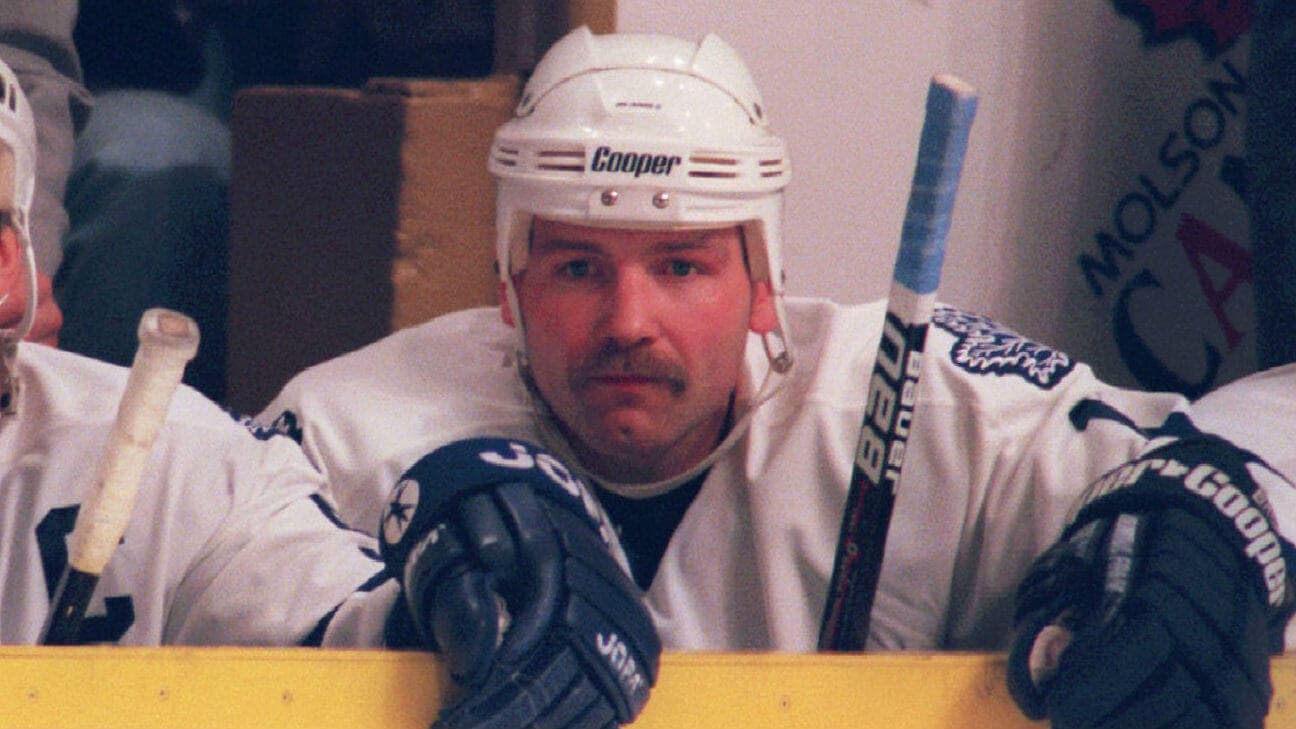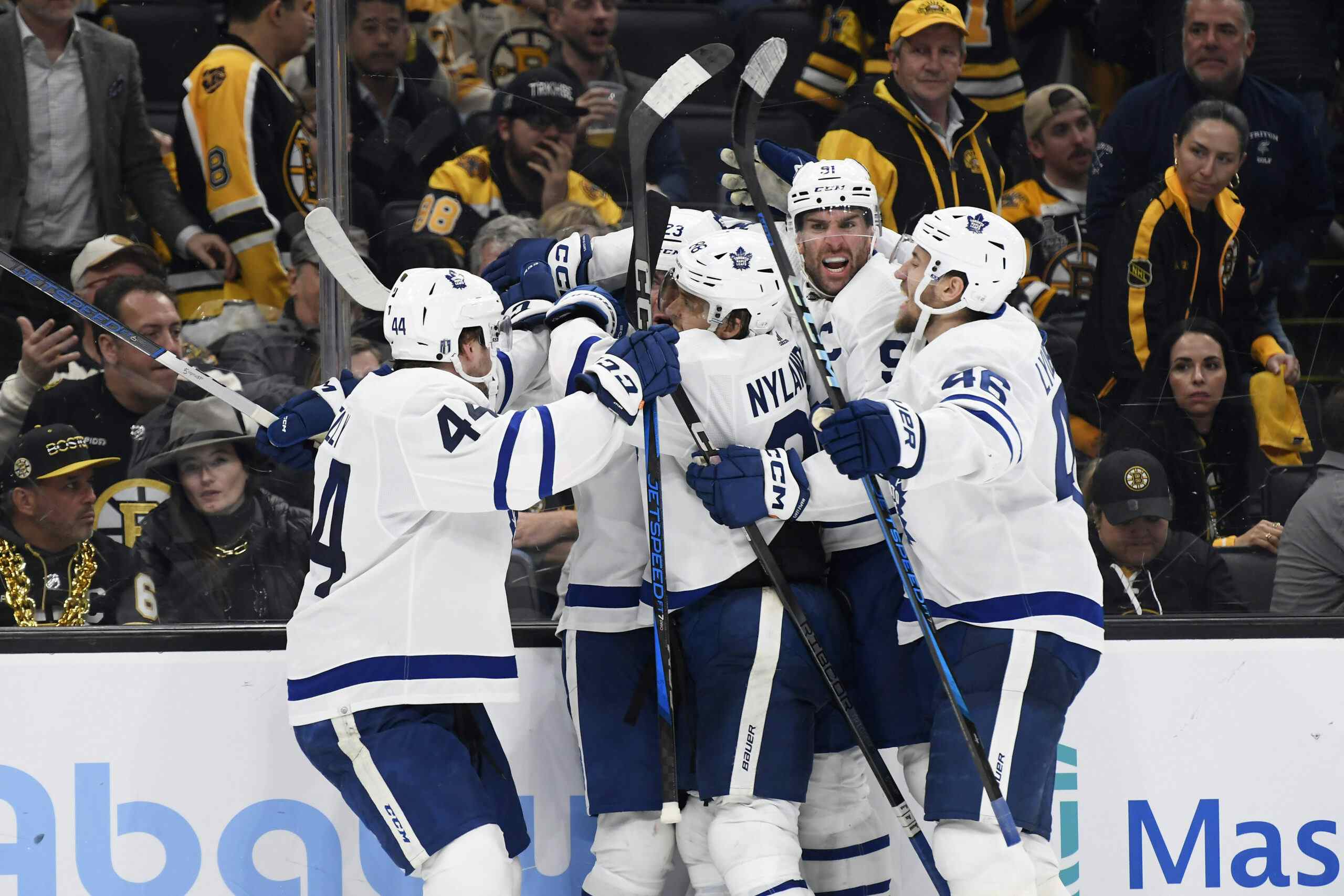Worst Leafs Trades Since 1967 Countdown – No. 5: Paying the price for Wendel Clark nostalgia

By Cam Lewis
3 years agoOver the next few weeks, I’ll be counting down the best and the worst trades the Toronto Maple Leafs have made since 1967.
Before I get into this one, it’s important to preface that Wendel Clark is one of the most important players in Toronto Maple Leafs history.
There’s a joke that runs around with younger Leafs fans that’s some kind of variation of “your crazy uncle thinks that Wendel Clark is the greatest Leaf of all-time.” There’s a reason that people think that way. He more than deserves the cult following he has from a generation of Leafs fans.
You can quite simply split the history of the Leafs into two parts: the pre- and post-Ballard days. In their first half-century as a franchise, the Leafs won 13 Stanley Cups. In their second, well, they haven’t won anything. This split right down the middle boils down to Harold Ballard’s ownership of the team, which began in the early 1970s.
During the 70s, the Leafs still showed some semblance of being a contender. They had great players like Darryl Sittler and Borje Salming and a legendary coach in Roger Neilson behind the bench. But, by the 80s, the rot of Ballard’s leadership really settled in. The team was terrible and Ballard didn’t care. His efforts were solely focused on the bottom line financially.
In 1845-85, the Leafs hit rock bottom. They put together a 20-52-8 record, good for dead-last in the league. Elsewhere, pretty much everybody else in Canada had a reason to cheer. The Oilers were at the height of their Gretzky-led dynasty, the Habs and Nordiques were duking it out for the top spot in the Adams Division, and even the Jets and Flames were good.
There was absolutely no hope with Ballard in charge. But, at that year’s draft, the Leafs got themselves a tiny beacon of light. With the first pick in the 1985 draft, they took Wendel Clark, a rugged, tough, offensive defenceman from the Saskatoon Blades.
Clark showed up to camp as a 19-year-old, got switched from defenceman to winger, and changed everything. He skated around like a wrecking ball, scoring goals, throwing huge hits, dropping the gloves — he injected life into a team that was dead.
Failed to load video.
In his rookie season, Clark led the team with 34 goals and with 227 penalty minutes. He played a key role in the Leafs returning to the playoffs and pulling off a first-round upset against the favoured Chicago Black Hawks. Because of Clark, the Leafs went from a team that was the laughingstock of the league, a quick, easy win, to a team that was difficult to face because there was this crazy Saskatchewan farm kid who would fly around and hit anything.
It’s obviously difficult to wrap your head around now because the game has changed so much and hockey isn’t really about big hits and fights anymore. But, back then, it was, and Clark embodied that tough, rugged play you needed to have in that era.
This is probably most noticeable in 1993 during the Leafs’ Western Conference Final series against Los Angeles. Marty McSorley, a feared enforcer who spent a lot of his career as a bodyguard for Wayne Gretzky, levelled Doug Gilmour with a vicious, high hit. Clark immediately stepped in and stood up for his teammate.
Failed to load video.
Clark never delivered the Leafs a Stanley Cup, he isn’t a Hall of Famer, and he never even earned himself a single Hart Trophy vote. But, he injected life into the Leafs when the team and the fanbase needed it so badly. I know, that’s a lot of preamble, but it’s important to contextualize what Clark meant to the Leafs because it’s key to understanding why they went ahead and shot themselves in the foot.
After reaching the Western Conference Final in back-to-back years in 1993 and 1994, the Leafs started to decline. They lost in the first round of the playoffs in the lockout-shortened 1995 season and then, after a slow start to the 1995-96 season, they fired head coach Pat Burns. Despite their ageing roster clearly needing some kind of retool, the Leafs decide to go all-in.
A 10-game winless streak that spanned from mid-February to early-March made the Leafs desperate for a shake-up. On March 13, they made two different trades, which I’m going to kind of mush together to be ranked No. 5 on this list of Worst Leafs Trades Since 1967.
They sent Dave Andreychuk to the New Jersey Devils in exchange for a second-round pick in 1996 and a conditional pick in either 1998 or 1999. They also sent Kenny Jonsson, Darby Hendrickson, Sean Haggerty, and a 1997 first-round pick to the New York Islanders to re-acquire Wendel Clark, who had been traded to Quebec a couple of years earlier.
Clark seemed to shoot life into the Leafs as they went on an 8-4-1 run to finish the season, resulting in them finishing third in the Central Division. Unfortunately, their playoff run wouldn’t last long as they got dropped by Wayne Gretzky and the Blues in the first round. Even if they had beat St. Louis, they weren’t getting past this Red Wings team in the next round.
Failed to load video.
The wheels fell off the following season. By Christmas, it was clear the Leafs weren’t going to be contenders, so, come February, they dealt Gilmour to the Devils, kicking off a miserable slog to the end of the season. The worst part about all of this was that there was no first-round pick to look forward to. The Islanders had Toronto’s pick from the Clark trade the previous year.
Toronto finished fourth-last in the league, resulting in the Islanders getting the fourth-overall pick in that summer’s draft. With that pick, New York selected franchise goaltender Roberto Luongo.
Now, it’s impossible to say if the Leafs would have drafted Luongo or not. They could have instead gone with the big, rugged defenceman Eric Brewer, who ended up going, also to New York, with the fifth-overall pick. But, if Toronto had their pick and hadn’t used it to acquire Clark, maybe they’re even worse in 1996-97 and they get a higher choice than fourth-overall. They were only seven points ahead of the Bruins who finished dead-last. Boston, of course, selected Joe Thronton with the top pick that year.
Regardless, giving up your following year’s first-round pick when it’s already becoming clear that your team is in decline is a terrible decision. Whether they ended up with Thornton or Luongo or Brewer or Olli Jokinen or Patrick Marleau or whoever from the top of that draft, any of them would have been more impactful long-term than Clark was for his second go-around on a declining team.
And, of course, there’s the other part involved with this whole deal. Dave Andreychuk went on to play 638 more games in the league after Toronto traded him, racking up 335 points and captaining the Tampa Bay Lightning to the 2004 Stanley Cup. The two picks Toronto acquired in return turned into nothing.
So, all told, in order to scrape together a meaningless playoff run, the Leafs traded away a great veteran for nothing and paid a massive price to re-acquire another veteran. There’s no doubting the impact that Wendel Clark had on the Leafs as a franchise. It’s just unfortunate they shot themselves in the foot buying into his nostalgia.

Recent articles from Cam Lewis




